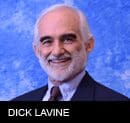The income gap between the Texas families at the top and bottom of the income ladder is the 7th highest in the nation, according to a new report by two national research organizations.
The average household income for the richest one-fifth of Texas households is 8.6 times greater than the average for the poorest one-fifth. The gap between the very highest income – the top 5% — and lowest one-fifth is even greater; the top group has an average income 14.3 times as large as the lowest.
The gap between the top one-fifth and the middle one-fifth of Texas families is also the 7th highest among the states.

The average household income for the richest one-fifth of Texas households is 2.9 times greater than the average for the middle one-fifth. The gap between the very highest income – the top 5% — and middle one-fifth is even greater; the top group has an average income 4.8 times as large as the lowest.
The current inequality reflects a long term trend: since the late 1970s, through the mid 2000s, the inflation-adjusted income for the poorest one-fifth of Texas families has remained flat – growing by only 2.4%. During the same time period, the income of the middle one-fifth improved only a little more – by 16.4%. But the top one-fifth saw its income grow by 58.9% and the top 5% saw a whopping 96.0% job in household income.
Texas’ inability to fund public services is directly linked to this growing income gap. Our tax system depends heavily on the sales tax and similar consumption taxes on gasoline, tobacco, and alcohol. These taxes each take a much greater proportion of the income of lower- and moderate-income families than from higher-income families.
This unbalanced tax load makes it harder for struggling families to support themselves and gather assets to support personal investments in education or housing. It also means that the revenue the state needs for public investments cannot keep up with the growth in needs, since our tax system is too closely linked to the incomes of the lowest-income families, which has failed to grow over the past decades.
The best solution is to adopt a state personal income tax, which reflects a taxpayer’s ability to pay, with higher rates on those with higher incomes.
To improve our current system, the Legislature should subject the entire Tax Code to a sunset review, to eliminate outmoded business tax breaks, wasteful property tax exemptions, and other special treatments enjoyed by higher-income households and corporations.
